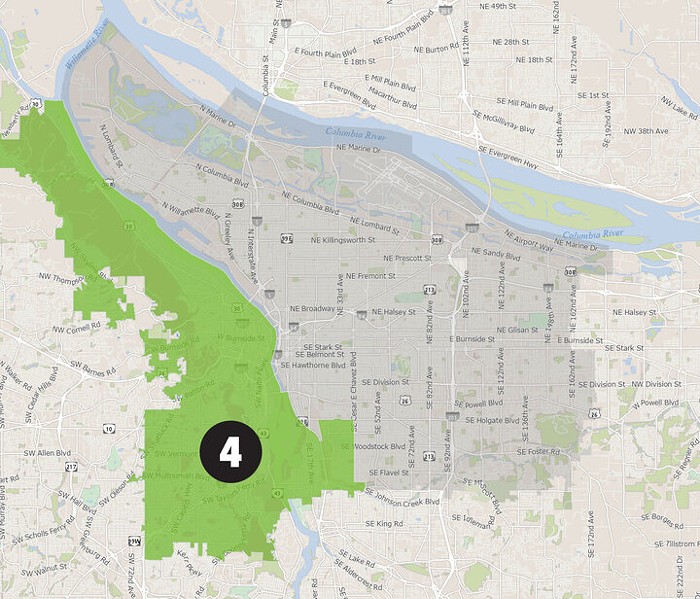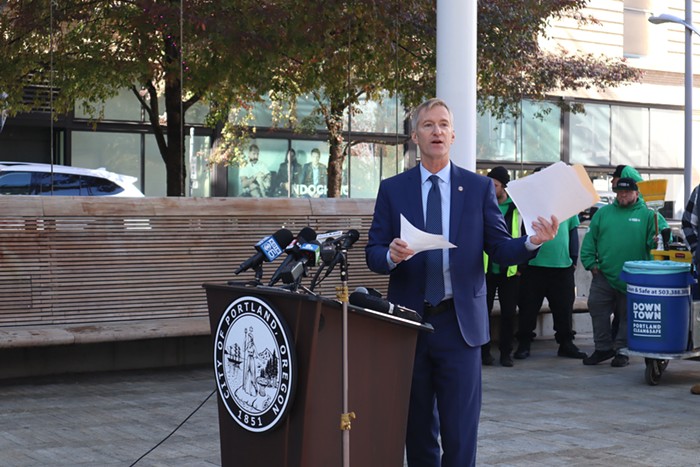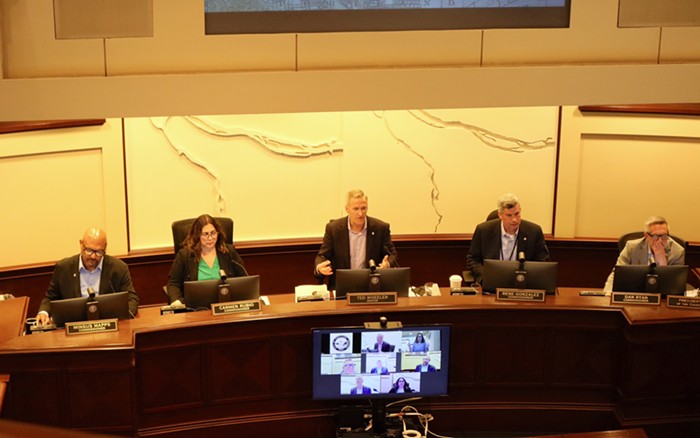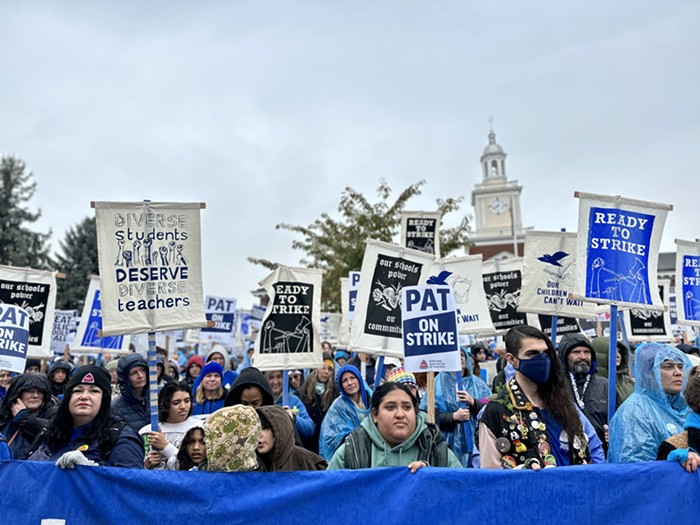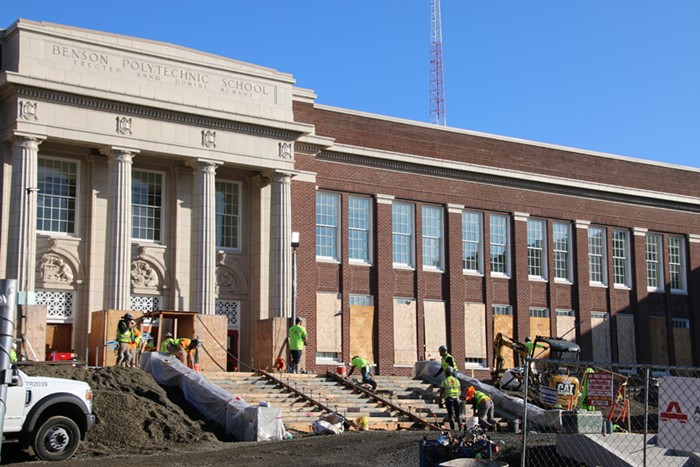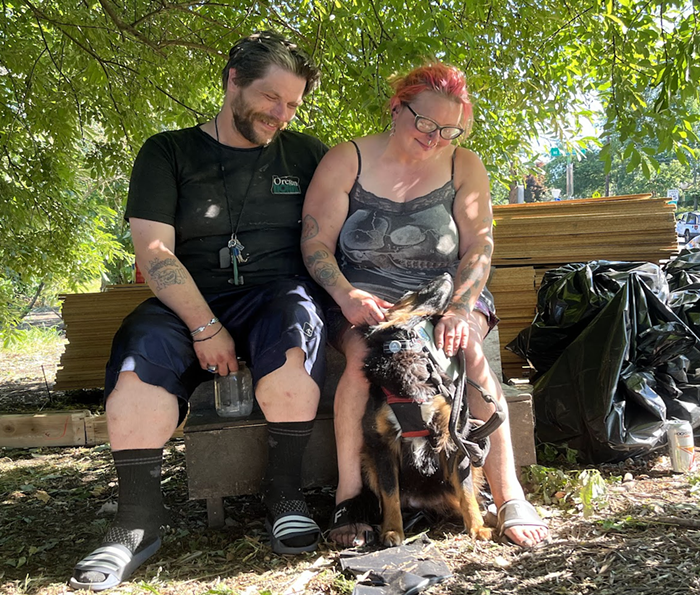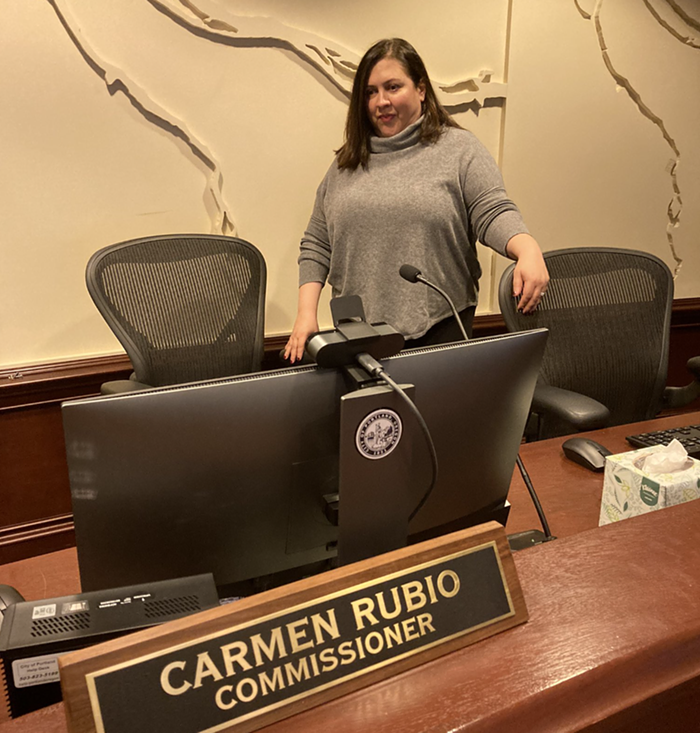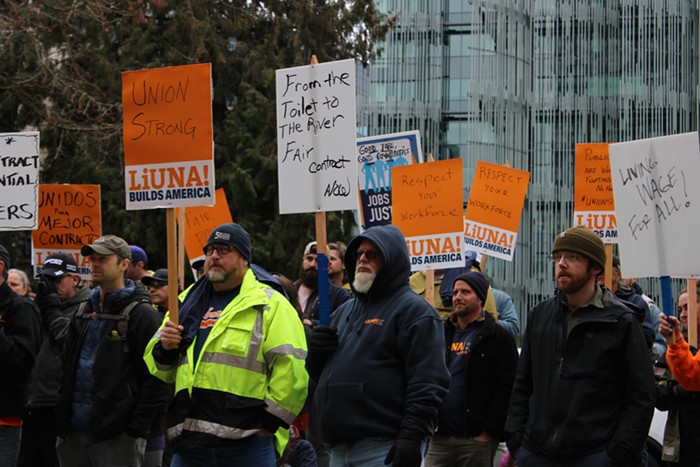
It was dispiriting news. But it also held the promise that things might improve the further we moved from the economic implosion that ended the last decade. But the update of that report, released today by the Portland Housing Bureau and Multnomah County Board of Commissioners, also bears some sour fruit.
The number of people living without shelter in the region, according to a one-day count January 30, has climbed to 1,895—close to a 10 percent increase. And that's just a glimpse at the overall problem.
An additional 2,546 people were listed as sleeping in shelters or in transitional housing. Thousands more, based on rough estimates, are doubling up with other families, cycling in an and out of shelter, or sleeping on someone's couch. (Close to 400 others were initially tallied but declined to give identifying information—keeping them out of the official count.)
And it's only thanks to millions in federal, state, and local funding (though federal funding is dropping precipitously) that the number isn't even higher.
"The count also documented 4,832 people who received rent assistance or permanent supportive housing on the night of the count who would most likely have been homeless without that support," the report says.
The report throws several details in stark relief—including looks at where people came from, how long they've been here, persistent racial disparities, and whether they're in families or alone. More people in families (72), compared to 2011, were found living on the streets or in shelters. More women showed up in the count. Also, says the report, "the number of people of color who are unsheltered was 38 percent higher in 2013 than in 2011."

As to why there's been an increase? The report points to persistently high long-term unemployment and continued economic malaise—almost half of those counted became homeless within the past year. The city also lost 75 shelter beds in the past two years.
But, most strikingly, the report looks at the region's historically low rental vacancy rate, 3.4 percent. Low vacancy means landlords can charge more than ever for rental space. High rent makes it difficult for families or people on the edge to stay housed, especially if they suffer some kind of costly surprise, like a medical emergency. High rent, and high competition, also throw up a steep barrier for people looking to move into permanent housing.
It's a 44-page report with several appendices. Hit the jump for just a taste of the wealth of charts it offers.




Respondents who were homeless when they came to Portland/Multnomah County were asked why they came here. It should be noted that only 216 respondents answered this question, so the responses may not be representative of the entire population of unsheltered persons. The question included several multiple choice options as well as “other.” Respondents were asked to check all of the answer choices that applied, and most respondents selected multiple answers. The most frequently selected answer choice was “family/ friends.” This was closely followed by “other” and “access to services and resources”, and then “job opportunities” and “like it here/good weather.” Among those who selected “other”, the most frequent responses were “traveling” and “passing through.” Other common responses included “from here originally”, “escaping domestic violence”, “escaping abuse”, “school”, and “wanting to start over.”



